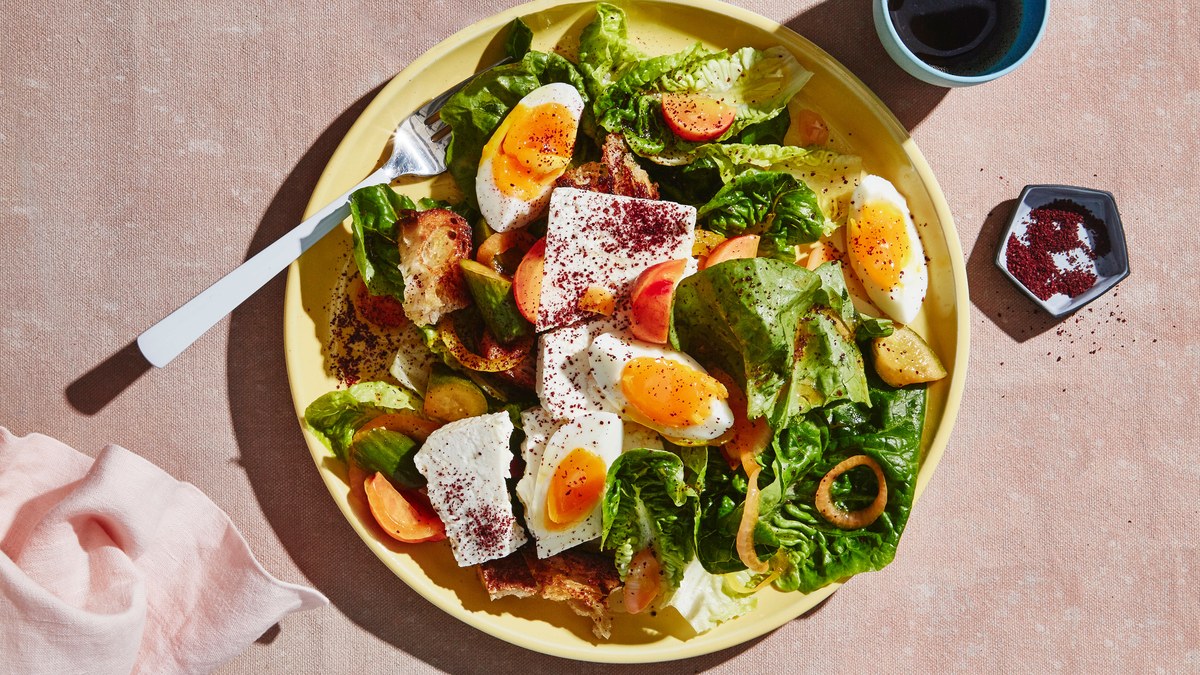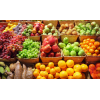Vegetable Salad or Fruit Salad
A salad is a dish consisting of a mixture of small pieces of food, usually vegetables. However, different varieties of salad may contain virtually any type of ready-to-eat food. Salads are typically served at room temperature or chilled, with notable exceptions such as south German potato salad which is served warm.
Garden salads use a base of leafy greens such as lettuce, arugula/rocket, kale or spinach; they are common enough that the word salad alone often refers specifically to garden salads. Other types include bean salad, tuna salad, fattoush, Greek salad (vegetable based, but without leafy greens), and sōmen salad (a noodle-based salad). The sauce used to flavor a salad is commonly called a salad dressing; most salad dressings are based on either a mixture of oil and vinegar or a fermented milk product like kefir.
Salads may be served at any point during a meal:
Appetizer salads—light, smaller portion-salads served as the first course of the meal.
Side salads—to accompany the main course as a side dish.
Main course salads—usually containing a portion of a high-protein food, such as meat, fish, eggs, legumes, or cheese.
Dessert salads—sweet versions containing fruit, gelatin, sweeteners or whipped cream.
The origin of salad
The Romans and ancient Greeks ate mixed greens with dressing, a type of mixed salad. Salads, including layered and dressed salads, have been popular in Europe since the Greek and Roman imperial expansions. In his 1699 book, Acetaria: A Discourse on Sallets, John Evelyn attempted with little success to encourage his fellow Britons to eat fresh salad greens. Mary, Queen of Scots, ate boiled celery root over greens covered with the creamy mustard dressing, truffles, chervil, and slices of hard-boiled eggs.
The oil used on salads can be found in the 17th-century colony of New Netherland (later called New York, New Jersey, and Delaware). A list of common items arriving on ships and their designated prices when appraising cargo included "a can of salad oil at 1.10 florins" and "an anger of wine vinegar at 16 florins". In a 1665 letter to the Director of New Netherland from the Island of Curaçao there is a request to send greens: "I request most amicably that your honors be pleased to send me the seed of every sort, such as cabbage, carrots, lettuce, parsley, etc. for none can be acquired here and I know that your honor has plenty,...".
Types of Salad
1.Green salad
A green salad or garden salad is most often composed of leafy vegetables such as lettuce varieties, spinach, or rocket (arugula). If non-greens make up a large portion of the salad it may be called a vegetable salad instead of a green salad. Common raw vegetables (in the culinary sense) used in a salad include cucumbers, peppers, tomatoes, onions, carrots, celery, radishes, mushrooms, avocado, olives, artichoke hearts, the heart of palm, watercress, parsley, garden beets, and green beans. Nuts, berries, seeds, and flowers are less common components. Hard-boiled eggs, bacon, shrimp, and cheeses may be used as garnishes, but large amounts of animal-based foods would be more likely in a dinner salad.
A wedge salad is made from a head of lettuce (such as iceberg) halved or quartered, with other ingredients on top.
2.Bound salad
American-style potato salad with egg and mayonnaise
Bound salads are assembled with thick sauces such as mayonnaise. One portion of a true bound salad will hold its shape when placed on a plate with an ice-cream scoop. Examples of bound salad include tuna salad, chicken salad, egg salad, and potato salad. Bound salads are often used as sandwich fillings. They are popular at picnics and barbecues.
3.Main course salads
A traditional Slovak fish salad of cod in mayonnaise
Main course salads (also known as "dinner salads" or as "entrée salads" in North America) may contain poultry, seafood, or sliced steak. Caesar salad, Chef salad, Cobb salad, Chinese chicken salad, and Michigan salad are dinner salads.
4.Fruit salads
Fruit salads are made of fruit, which may be fresh or canned. Examples include fruit cocktail. Note that "fruit" here refers to culinary fruits, many common components of vegetable salads (such as tomatoes and cucumbers) are botanical fruits but culinary vegetables.
5.Dessert salads
Ambrosia
Dessert salads rarely include leafy greens and are often sweet. Common variants are made with gelatin or whipped cream; e.g. jello salad, pistachio salad, and ambrosia. Other forms of dessert salads include snickers salad, glorified rice, and cookie salad popular in parts of the Midwestern United States.
How to make Salad?
You can mix and match a variety of ingredients you like, here is just an example.
Ingredients
3/4 cup canola oil
1/4 cup lemon juice
2 garlic cloves, minced
1/2 teaspoon salt
1/2 teaspoon pepper
2 bunches (1 pound each) romaine, torn
2 cups chopped tomatoes
1 cup shredded Swiss cheese
2/3 cup slivered almonds, toasted, optional
1/2 cup grated Parmesan cheese
8 bacon strips, cooked and crumbled
1 cup Caesar salad croutons
Directions
In a jar with tight-fitting lid, combine the oil, lemon juice, garlic, salt, and pepper; cover and shake well. Chill.
In a large serving bowl, toss the romaine, tomatoes, Swiss cheese, almonds if desired, Parmesan cheese and bacon.
Shake dressing; pour over salad and toss. Add croutons and serve immediately.
The salad is a simple and convenient dish. In our daily life, we can mix it with our own food according to our needs, but we still need to pay attention to the healthy mix when making a salad. I hope everyone who loves food can eat happily and eat healthily.
Related Articles
Search
Categories
Popular Posts






















Comments: 0
No comments